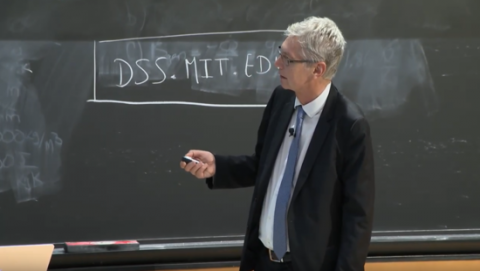
ERC Advanced 2019
De nouveaux succès à la Faculté des Sciences et Ingénierie de Sorbonne Université. Quatre des 21 chercheuses et chercheurs récipiendaires français font leur recherche dans des unités mixtes de recherche (UMR) associées à la Faculté des Sciences et Ingénierie de Sorbonne Université. Félicitations aux quatre récipiendaires !
Conseil européen de la rechercheL'appel ERC Advanced s'adresse à des chercheuses et chercheurs expérimentés et reconnus qui s’engagent sur un projet de recherche novateur.

Gérard Assayag, Chercheur IRCAM (STMS1) |
||
|
(1) Laboratoire Sciences et Technologies de la Musique et du Son Projet : Raising co-creativity in cyberhuman musicianship (REACH) Résumé (en anglais) :
|

Jacques Laskar, Directeur de Recherche CNRS (IMCCE2) |
||
|
(2) Institut de Mécanique Céleste et de Calcul des Éphémérides Projet : Astronomical Solutions over Geological Time (AstroGeo FR) Abstract However, extending this work is difficult because celestial mechanics does not allow us to retrace the planetary orbits beyond 60 Ma due to the chaotic nature of the movement of the planets, highlighted by Jacques Laskar thirty years ago. The AstroGeo project aims to overcome this predictability horizon, imposed by the laws of gravitation by using ancient geological data as an additional constraint in obtaining astronomical solutions. In this ambitious project which makes it possible to reconstruct the orbits of the planets of the solar system, the limit is no longer imposed by the exponential propagation of uncertainties, with an almost impassable horizon at 60 Ma, but by the quality of the sedimentary data which could be used until very remote times, going as far as the Archean, 3 billion years ago. The feasibility of the AstroGeo project was demonstrated with the publication in PNAS (Olsen et al, 2019) by an international team including Jacques Laskar, of a study showing how the analysis of sediment data from the Newark basin had made it possible to find the state of the solar system 200 Ma ago (https://www.imcce.fr/news/mouvements-planetaires-geologie). AstroGeo will more generally benefit from the very numerous collaborations established for three decades by Jacques Laskar with geologists around the world, with in particular in France, the ISTEP laboratory (Institute of Earth Sciences in Paris, UMR 7193), partner of IMCCE as part of the National Agency for Research AstroMeso project started in October 2019. AstroMeso is part of the wider AstroGeo project, and allowed to recruit a post-doctoral researcher to study sediment data from the Paris basin and the Vocontian basin in the South-East of France. Since the first long-term solution of the movement of the planets established by Urbain Le Verrier in 1840, and used by Milutin Milankovitch a century later to establish the astronomical theory of climates, the Paris Observatory has provided most of the planetary solutions which were used to correlate changes in insolation on the Earth's surface with glacial or sedimentary records. AstroGeo aims to continue this tradition of excellence by transforming the way solutions will be distributed to the paleoclimate community. Instead of producing a single reference solution which serves as the basis for establishing the geological time scale, which is no longer possible beyond 60 Ma, AstroGeo will provide a set of solutions, all compatible with the best observations from the moment, also giving users the possibility to search among these solutions, those which will best correspond to the newly collected data. The solution could then be constrained by these new stratigraphic data.
|

Frédérique Le Roux, Directrice de Recherche Ifremer (LBI2M3) |
||
|
(3) Laboratoire de Biologie Intégrative des Modèles Marins Projet : A mechanistic approach to understand microbiome-viriome dynamics in nature (DYNAMIC) Résumé (en anglais) :
|

Stéphane Zaleski, Professeur Sorbonne Université (JLRA4) |
||
|
(4) Institut Jean Le Rond d'Alembert Stéphane Zaleski est professeur des universités à Sorbonne Université où il mène ses recherches au sein de l’Institut Jean Le Rond d'Alembert. Il y développe des méthodes numériques adaptées à l'étude des milieux multiphasiques, que ce soit sous l’angle des phénomènes d’écoulement, des problèmes de transfert de masse ou de changement de phases. Ses recherches les plus récentes concernent l’apprentissage automatique de méthodes numériques ainsi que des méthodes implémentées dans des codes libres en collaboration avec des sociétés d'ingénierie. Il est membre honoraire de l’Institut Universitaire de France (promotion 1995). Projet : TRansfers at tiny scales in tUrbulent multiphase FLOW (TRUFLOW) Résumé (en anglais) : |

